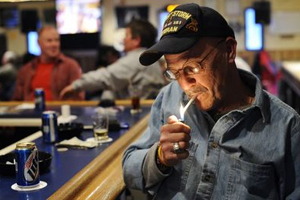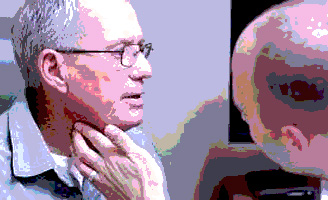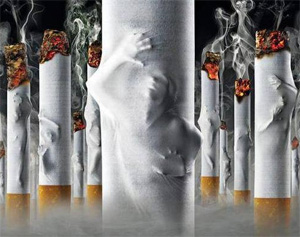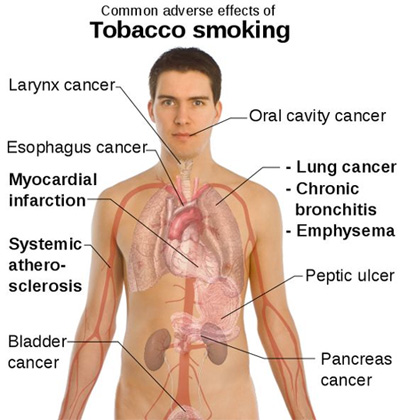 Opinion: It’s been more than twenty years ago, but I remember it like it was yesterday. I had been in medical practice in Tulsa for about ten years and my mother and sister decided to tour China – one of their bucket list excursions. I had gone home to Bartlesville to visit my father left behind to mind the homestead and we were sitting, chatting in our den. He got out of his chair, walked up to where I was sitting and, lifting his chin, pointed to a lump on his neck.
Opinion: It’s been more than twenty years ago, but I remember it like it was yesterday. I had been in medical practice in Tulsa for about ten years and my mother and sister decided to tour China – one of their bucket list excursions. I had gone home to Bartlesville to visit my father left behind to mind the homestead and we were sitting, chatting in our den. He got out of his chair, walked up to where I was sitting and, lifting his chin, pointed to a lump on his neck.
“What do you think this is?” Before I touched it, I knew, but I reached out and pressed against the hard lump just under his chin.
 “I’m not sure,” I lied, trying to deny the truth of my senses and training. “I think you should go see your doctor and get some antibiotics. If that doesn’t help, you may need to get a biopsy.” When I saw the lump, when I pressed on the hard and fixed nodule, I knew it was cancer.
“I’m not sure,” I lied, trying to deny the truth of my senses and training. “I think you should go see your doctor and get some antibiotics. If that doesn’t help, you may need to get a biopsy.” When I saw the lump, when I pressed on the hard and fixed nodule, I knew it was cancer.
My dad had smoked as long as I had been aware and that, along with his moderate alcohol intake, was a perfect set up for a tobacco-linked cancer. He was luckier than most – he lived more than five years after his diagnosis and didn’t face any major surgery, just some specialized radiation therapy – but in the end, he painfully succumbed to his tobacco-related throat cancer after six months on tube feedings on hospice.
 Tobacco is a killer. One of every five deaths in the U.S.is at least partially attributable to tobacco use. It is one of the leading causes of preventable death in the world today. But tobacco is also highly addictive – about as much so as crack cocaine – so it is a difficult habit to break. We have made it easy to become addicted – we provide it over the counter without a prescription and at low cost, making it a perfect set-up for almost anyone to become addicted.
Tobacco is a killer. One of every five deaths in the U.S.is at least partially attributable to tobacco use. It is one of the leading causes of preventable death in the world today. But tobacco is also highly addictive – about as much so as crack cocaine – so it is a difficult habit to break. We have made it easy to become addicted – we provide it over the counter without a prescription and at low cost, making it a perfect set-up for almost anyone to become addicted.
Ten percent of middle schoolers smoke, as do 13 percent of high schoolers and over 20 percent of Oklahoma adults. And it’s costly. Oklahoma spends over $1.6 billion every year on tobacco-related illnesses, much of it coming directly from tax payers through funding Medicaid. Nationally, it’s more than $170 billion – and growing, growing like the cancer that it produces, and making the economy breathless, like the lung disease it causes.
I t’s time we put a user’s tax on this dangerous drug. It’s time we made it pay for at least a part of the damage it’s done to all of us – robbing us of our fathers, our mothers, sisters and brothers – robbing us of breath and decreasing the productivity of our lives. By adding the additional tax to a pack of cigarettes, it helps the state to pay for the health care costs it produces, but it also decreases the likelihood that that middle schooler or high schooler is going to spring for the cash to buy a pack of cigarettes. [Editor: Children are rarely impacted by costs as parents supply money.]
t’s time we put a user’s tax on this dangerous drug. It’s time we made it pay for at least a part of the damage it’s done to all of us – robbing us of our fathers, our mothers, sisters and brothers – robbing us of breath and decreasing the productivity of our lives. By adding the additional tax to a pack of cigarettes, it helps the state to pay for the health care costs it produces, but it also decreases the likelihood that that middle schooler or high schooler is going to spring for the cash to buy a pack of cigarettes. [Editor: Children are rarely impacted by costs as parents supply money.]
It makes those adults think hard and long about whether or not it’s worth it to continue the habit. If smoking decreases in Oklahoma, our health improves – and… don’t we need that, don’t we deserve it?
I’d give almost anything to have my father back. It’s worth $1.50 a pack.

Is it worth $1.50 a pack the writer asks? To the writer, of course it is. He doesn’t smoke. It is easy to tax the sin and habits of others. That is the great glory of sin taxes. Only those dang other people, those crass sinning folk, the dirty unwashed masses, the addicted underclass – you know them – the “other” than ruling class people of wisdom and foresight that use government to impose their will by force.